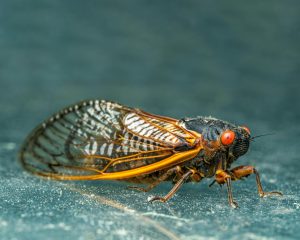 LACIE SILVA – Editor
LACIE SILVA – Editor
A thirteen-year slumber is almost over for Brood XIX, a species of cicadas, which will be making their presence known come mid-May and linger for the following month, as the insects seek mates before going into hibernation once more.
The number of Cicadas are expected to reach levels not seen for 221 years. The brunt of the swarm will be seen in Tennessee counties: Blount, Cheatham, Clay, Davidson, Grundy, Hamilton, Jackson, Loudon, Macon, Marion, McMinn, Meigs, Putnam, Rutherford, Sequatchie, Smith, Stewart and Summer. In an unprecedented event, two cicada groups, the Brood XIX (Great Southern Brood), and Brood XIII (Northern Illinois Brood), will make their simultaneous appearance for the first time since 1803, marking a phenomenon known as a dual emergence.
Cicadas typically commence their emergence when the temperature of the soil, eight inches below the surface, reaches 64 degrees, a process influenced by weather conditions. Female cicadas lay their eggs in trees, and upon hatching, the nymphs descend to the ground and start burrowing. They continue this process until they reach eight feet underground, where they remain for either 13 or 17 years, depending on the specific brood to which they belong. Following this extended period, they tunnel their way back to the surface for the process to begin again. The term “brood” is used to differentiate between the various large groups in which cicadas emerge.
Tennessee is one of 14 lucky states that will see the Brood XIX emerge from their thirteen-year nap. Other states across the Midwest and Southeast include: Alabama, Arkansas, Georgia, Illinois, Indiana, Kentucky, Louisiana, Missouri, Mississippi, North Carolina, Oklahoma, South Carolina, and Virginia
In total, these regions will experience a lively six-week period as cicadas swarm around, seeking mates and depositing eggs into slits they cut into tree branches. Following this, the cicadas will die, emitting an unmistakable odor described by entomologist Floyd W. Shockley as akin to the scent of rotting nuts as their bodies decay. Despite their clumsy flight, making them vulnerable to predators like birds, cicadas are harmless—they don’t bite, sting, or carry diseases. Instead, they play a vital role in the ecosystem as natural tree caretakers.
The holes created by cicadas serve to aerate the soil, allowing rainwater to penetrate and nourish tree roots during hot summer months. While the slits made in trees may cause some branches to break, resulting in a process known as “flagging,” this is akin to natural pruning. As the tree regrows the branch, the subsequent fruit tends to be larger. Moreover, the decomposing bodies of cicadas contribute essential nutrients to the soil.
Gene Kritsky, a retired professor of biology and cicada expert, underscores the significance of these insects in the eastern deciduous forest ecosystem. Despite the potentially overwhelming presence of approximately one trillion cicadas during the dual emergence, Shockley encourages people to appreciate the rarity of this natural event. He advises against fear, urging individuals to embrace it for the wondrous and temporary spectacle that it is.
The Marion Tribune – January 25, 2024










